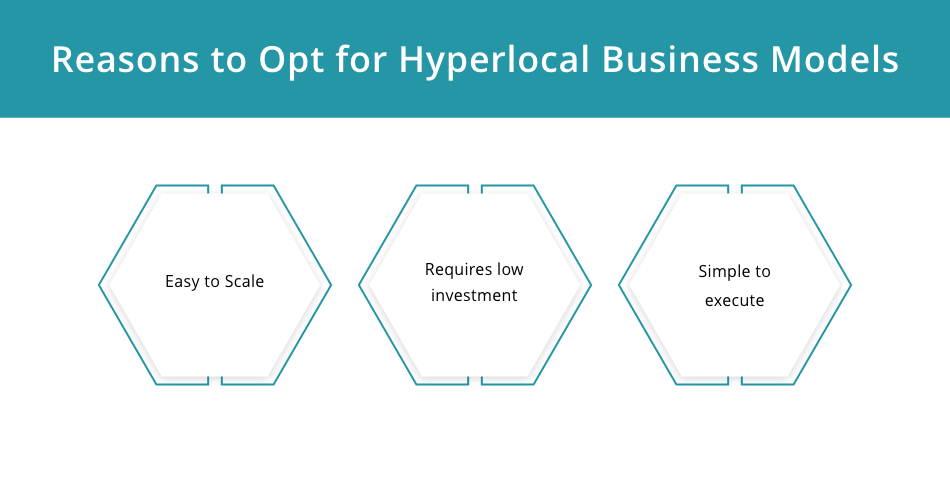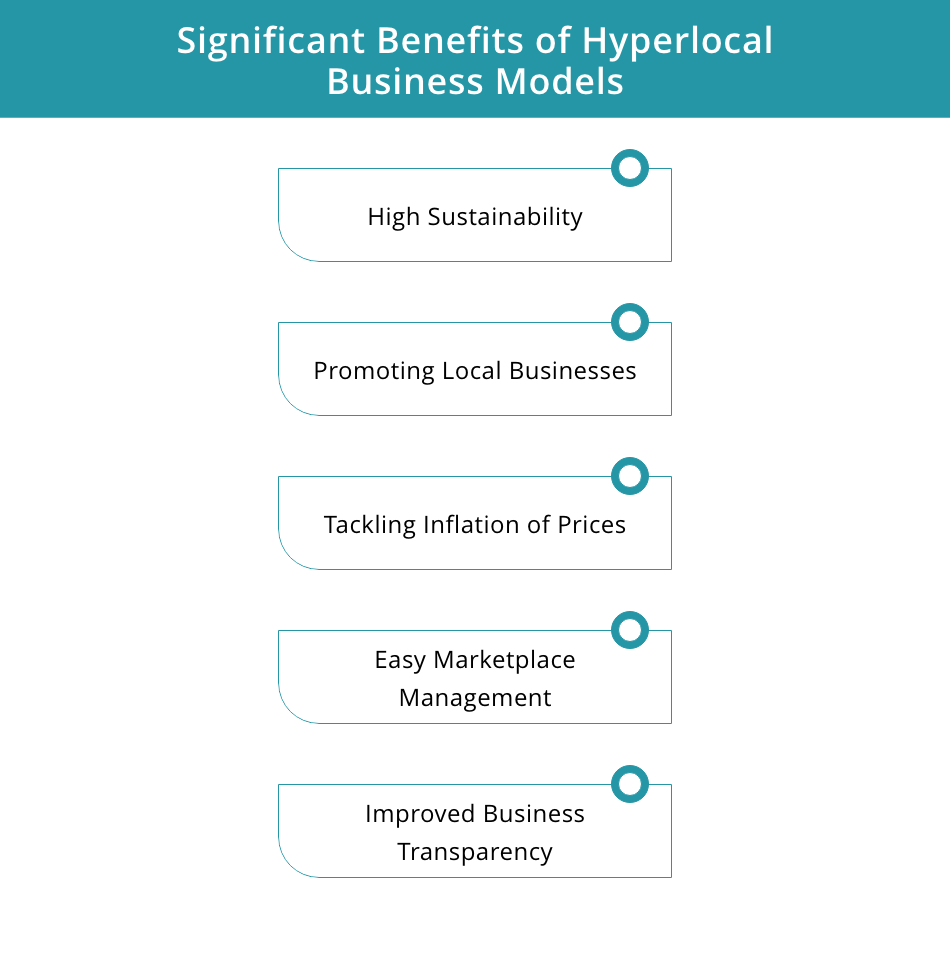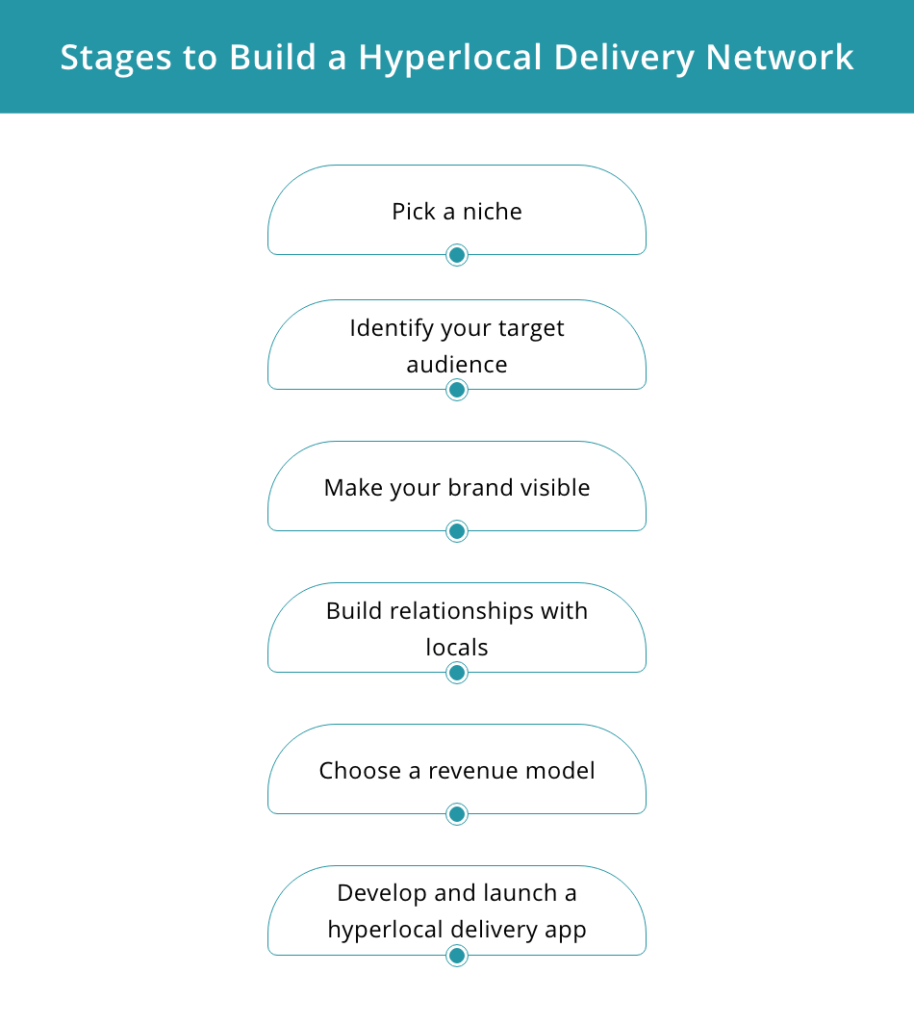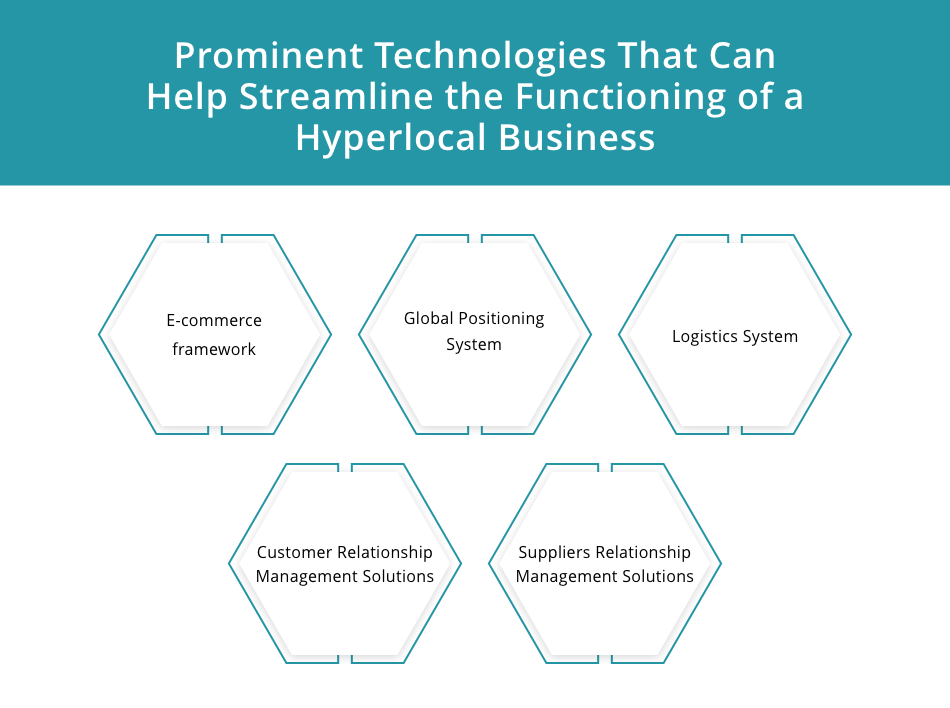In times when on-demand delivery apps are already booming the market, the implementation of hyperlocal business models can provide a boost to existing growth.
Updated 13 October 2023

Global Delivery Head at Appventurez
The rise of on-demand delivery applications has completely revolutionized the way businesses used to market their products. From ordering food to purchasing groceries, from AC repair to cab booking, on-demand services have made lives easier than before. No one has ever imagined that the utopia of getting everything at the doorstep will soon become a reality,
But have you ever wondered how you receive such on-demand services nearby to you instantly? Well, that’s when hyperlocal business models come into the picture. This business architecture works by building a local ecosystem, fulfilling the customers’ needs on demand within a specific area.
A hyperlocal business model is a perfect instance of how technology integration and localization can make the shopping experience smooth and convenient. In fact, the right utilization of the features of this marketing strategy can help companies expand their businesses exponentially.
The literal meaning of the term hyperlocal is extensively local, which means something that is well-defined and specifically local to a particular geographic area. In this essence, hyperlocal business refers to a commercial model that helps meet consumers’ demands located nearby.
In a hyperlocal delivery model, the distributor of the service ordered and the location of the customer should lie within the same postal code. This type of business model typically works with on-demand services like food delivery, cab booking, delivery of groceries and medicine, repair and maintenance services, etc.
Often known as a micro-marketplace, a hyperlocal business model focuses on fulfilling the demands of localized consumers. Its primary objective is to bridge the gap between the demand and supply of a particular on-demand service with a well-organized network of vendors and supplies. Since these suppliers are located nearby, they deliver the specific service to the consumers timely at their doorstep.
Typically, a hyperlocal business model caters to the consumers’ demands by delivering products and services feasibly via a digital platform based on the local ecosystem. Both local store owners and customers leverage these platforms in order to make the delivery of on-demand services quick and convenient.
“In contrast to e-commerce which takes at least a day to deliver a shipment, a hyper local delivery platform does the job in a few hours or even minutes. This is certainly the USP of a hyperlocal business model.”
– Ashish Chauhan, Global Delivery Head
The hyperlocal industry is booming at an unprecedented rate, and changing lifestyles, urbanization, and technological advancements are the primary reasons for it. Today, consumers want everything in a few minutes, and hyperlocal services offer them that.
The global hyperlocal marketplace was valued at $1.43 billion in 2022 and is projected to reach the $4.63 billion mark by 2028. The upsurge in digitization is one of the notable elements responsible for such enormous growth in the hyperlocal industry, Here are some reasons why businesses must opt for hyperlocal marketing:

One of the major reasons companies prefer hyperlocal business is that they can easily scale the growth. Since businesses target only a specific locality, managing the demand-supply graph becomes attainable.
Unlike companies that work on an inventory-based model, hyperlocal businesses do not need inventory on an urgent basis. Due to this, store owners can easily do business even with low funding.
The execution of hyperlocal marketing strategies is simple as only local communities are targeted.
Recent studies have shown that around 87% of consumers have used the internet just to find out about local businesses in 2022. Due to this fact, companies across different industries are going hyperlocal for enhanced online presence and better business opportunities. Here are some benefits of adopting hyper location business strategies:

Today, most companies are looking for a business ecosystem that is sustainable and feasible. A hyperlocal business can prove to be helpful in such cases. A hyperlocal delivery model leverages automation by integrating AI and ML into the supply chain and logistics systems. This makes the delivery process seamless, further reducing the costs incurred in shipping.
Also, a hyperlocal model operates only in a limited area, minimizing long transportation. Consequently, the amount of carbon footprint is reduced significantly, as well.
The emergence of globalization and industrialization has digitized the major section of the global marketplace. Although it considerably helped companies to expand their businesses, it immensely impacted the local sellers and their economy.
A hyperlocal business strategy aims to help and support local brands by including them in the loop of on-demand services. These companies tie up with local stores and remote startups and help them grow along.
One of the best things about hyperlocal business models is that they connect the consumers directly to the producers. It means there are no intermediaries included in a hyperlocal model, ensuring that a local business gets what it deserves without experiencing any inflation in the prices.
Simply put, when the consumer buys a product or service directly from a nearby seller, both parties share and receive the prices fairly.
Managing a hyperlocal business is not a tough nut to crack. Companies can simply develop and use a digital platform – say hyperlocal websites or applications to track and manage the entire business. Besides this, incorporating artificial intelligence into the retail business can automate and simplify tedious tasks.
With an interactive and convenient dashboard, even a non-technical local business owner can enhance their market visibility and growth.
Another major advantage of hyperlocal businesses is that it maintains transparency for the consumers regarding their orders. For instance, consumers can easily track their orders, know when they are packed, and are out for delivery.
It could be easily understood by the working process of companies like Zomato. It provides users with all the information like when the order is under preparation, when it is packed, and when the rider is out to deliver it. This kind of business transparency builds and strengthens the trust between customers and business owners.
Developing and evolving a hyperlocal business requires a strategic process to be followed. So, before building a hyperlocal delivery model for your business, it’s better to follow the step given below:

The first and foremost step in the process of developing a hyperlocal business model is to decide what you want to offer to your consumers. Hyperlocal models have a massive scope in a wide range of industries, such as pharmaceuticals, grocery, cabs, household repair and maintenance, food items, etc. You can pick a niche as per your convenience and preference or analyze the geographical area you are targeting to determine the major consumer demands.
The next step is to evaluate the demographics of the locality you are targeting and identify the target audience. This is a crucial step as it determines what types of services are most demanding and how you can deliver them in a way that outshines your competitors.
For instance, if you deal in the food delivery business, your target audience is most likely to be working professionals or students. The age range of this audience can lie anywhere between 18 and 40. With appropriate insights about your target audience, you can figure out the right hyper local marketing ideas that drive productive results.
After identifying the right audience, it’s time to make your brand visible by using the best hyperlocal marketing strategies. For this, you need to build and enhance both your online and local presence by connecting with your consumers.
Promoting your brand over social media channels could be the best way to do that. You can invest a little amount and get sponsored by running ad campaigns targeting the local audience. Besides this, conventional advertising methods like flyers, billboards, and word-of-mouth can also be effective for hyperlocal businesses.
One of the essential parts of creating a hyperlocal delivery model is building robust relationships with the local parties. You need to collaborate with delivery agents, local store owners, and suppliers to deliver hyperlocal services seamlessly.
The challenging part of this process is making the locals understand how and why they should partner with you in your hyperlocal business. Moreover, you also need to align them with the entire process and convince them how digitization can help them grow exponentially.
In addition, there could be chances that many of the local merchants are not aware of using hyperlocal apps. Therefore, you need to brief them on an app’s functioning and how it could streamline their overall operations. The same applies to delivery agents, as well.
Your revenue model is typically based on two sources – delivery charges from the consumers and commissions acquired from the local merchant partners. Generally, the percentage of commission paid by these merchants is fixed for all the orders placed from their stores. However, they are willing to pay more commission if you bring more customers and business to them.
When it comes to delivery service fees, you can charge your customers at their convenience. You can change this fee based on weather conditions and distance, and even offer free delivery when customers place an order for a certain amount. That’s why choosing a suitable app monetization model plays a significant role in the development process.
Now, the last part of this process is developing your online portal for hyperlocal business. For this, you need to pick a platform (Android, iOS, or both) and based on that you can choose the right tech stack.
There will be three different applications each for three parties – the customers, the drivers, and the merchants. As a business owner, you can have admin access to monitor all three types of applications for smooth functioning.
The UI interfaces of these hyperlocal apps must be user-friendly and interactive enough so that both the customers and merchants feel comfortable placing and accepting the orders, respectively. Also, the applications must be easily navigable and completed with advanced technologies for a smooth customer experience.
Like any other development process, building a hyperlocal business network needs a combination of multiple technologies for better functioning. Here are a few must-have technologies that can help you build a robust hyperlocal marketplace:

A well-built e-commerce framework includes a highly intuitive digital platform in the form of an app or website. This platform helps in maintaining effortless communication between hyperlocal businesses, consumers, and local retailers. Shopify, Salesforce, and WooCommerce are some of the most popular platforms with the best e-commerce APIs.
A GPS-based navigation system such as Google Maps is one of the major needs for a hyperlocal business to ensure timely deliveries. Besides this, it also helps consumers to find nearby sellers and direct delivery partners to deliver the orders to the exact location.
A well-organized shipping and logistics system plays a key role in a hyperlocal business to ensure last-mile deliveries. Without an efficient logistics management app or system, the products would not reach the customers on time, creating loopholes in the entire hyperlocal delivery model.
Customer Relationship Management (CRM) and Suppliers Relationship Management (SRM) are the two significant pillars that hold any business together. A CRM system helps in enhancing the interaction and engagement with potential customers. It strengthens the relationship between the customers and hyperlocal businesses, further driving sales and maximizing profits.
An SRM solution, on the other hand, connects the suppliers with the local store owners to fulfill the market demands. A local merchant can easily analyze the current market needs, prepare a list of demanding resources, and connect with the suppliers for the same through an SRM platform.
Today, one of the most efficient ways to capture your target audience’s attention is to resolve their issues and offer them a quality experience by fulfilling their demands. Well, in the current landscape, two things that consumers most likely look for are quick resolutions and convenience.
This is why hyperlocal business models are flourishing rapidly. The potential at which they deliver valuable solutions to consumers at unbelievably fast speeds brings hyperlocal to the forefront. However, developing a hyperlocal delivery network is a cumbersome process, and it’s better to consult an on demand app development company for this purpose.
Appventurez is one of the highly professional companies having expertise in on-demand app development. The preeminent team of project managers, developers, and marketers can assist you with the entire hyperlocal business development process. Hence, it’s time to request a free demo and begin your entrepreneurial journey with Appventurez.
Q. What is hyperlocal marketing?
Hyperlocal marketing is a business strategy that focuses on targeting prospective customers within a limited geographic area using localized and relevant promotional activities.
Q. What is hyperlocal delivery in an e-commerce model?
Hyperlocal delivery refers to the process of delivering goods and services to consumers within a small geographic area from local stores through digital platforms.
Q. What are some examples of a hyperlocal business?
Airbnb, eBay, Zomato, Yelp, TaskRabbit, and Craigslist are some of the popular companies that follow a hyperlocal business model.


Elevate your journey and empower your choices with our insightful guidance.

Global Delivery Head at Appventurez
Ashish governs the process of software delivery operations. He ensures the end product attains the highest remarks in qualitative analysis and is streamlined to the clientele’s objectives. He has over a decade of experience as an iOS developer and teams mentorship.
You’re just one step away from turning your idea into a global product.
Everything begins with a simple conversation.